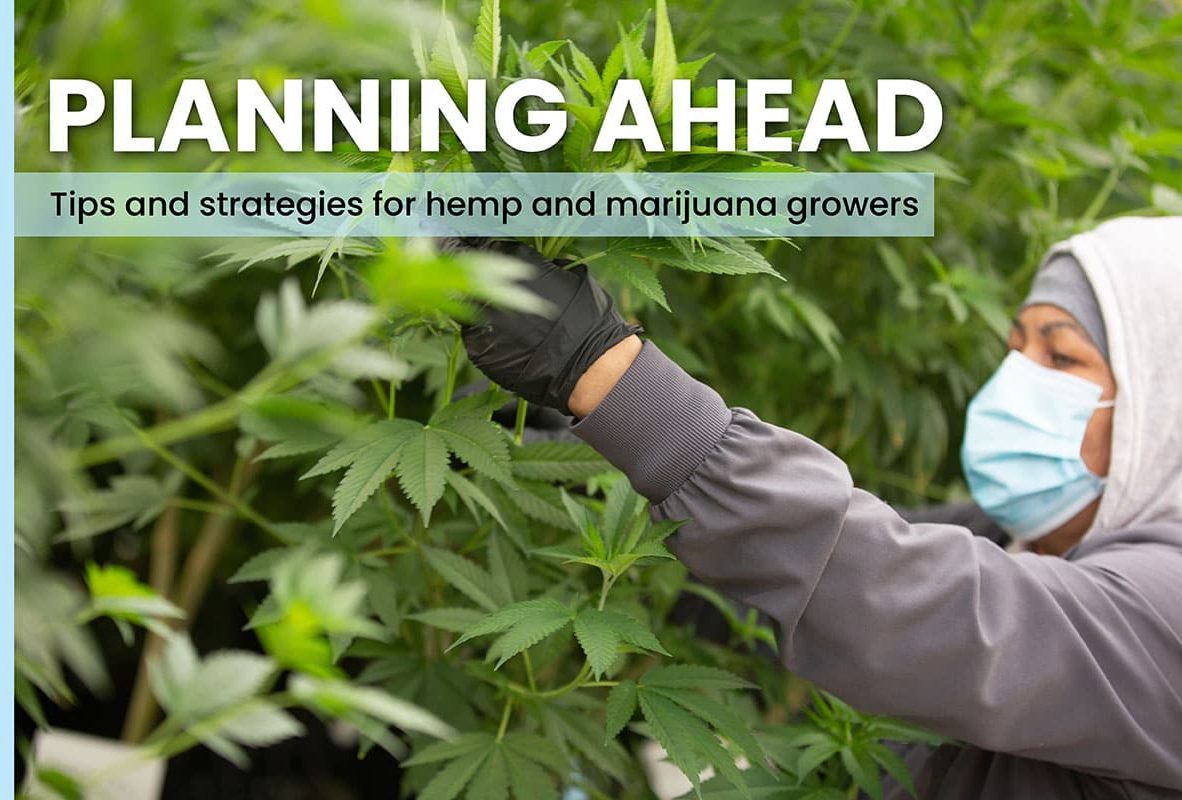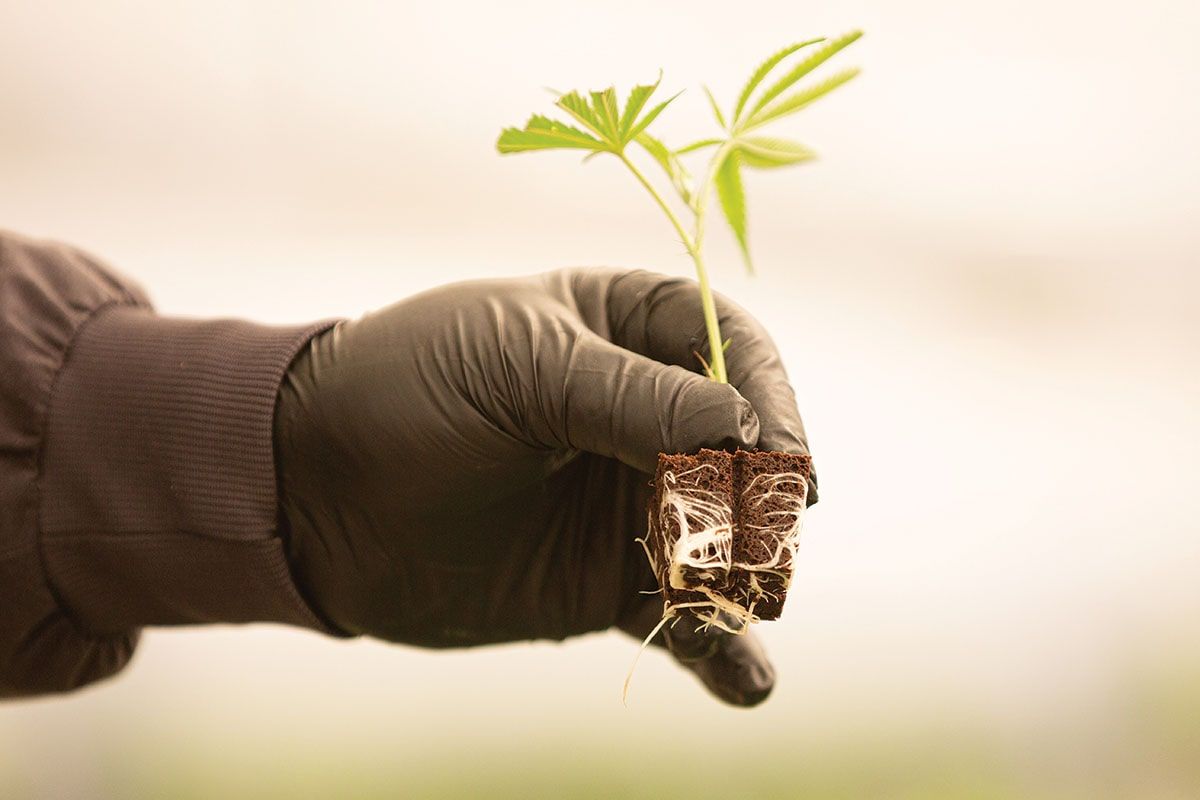(This is the fifth installment in a series focused on cultivation planning for marijuana and hemp growers. The previous installment is available here.)
Cannabis growers need to have an adequate supply of materials on hand once planting season rolls around.
They can’t scramble at the last minute to find necessary fertilizer, growing materials or anything else.
Not only will that slow their operation, but it also could lead to ill-advised purchases for too-high prices or buying something cultivators don’t really want.
“Grow inputs are like commodities, so commercial growers that shop early and buy in bulk will realize the greatest savings,” said Ryan Douglas, a Florida-based cannabis consultant and former master grower at Tweed, a major cannabis producer with headquarters in Ontario, Canada.
Essentials
Cannabis growers typically buy the most of substrates and fertilizer.
A smart grower will look at last year’s operation and calculate how much of those they need for the coming grow season.
Douglas recommends indoor marijuana growers stock up on substrates such as rock wool and dehydrated coco coir blocks, while hemp growers should stock up early on mineral fertilizers. Store these supplies in a dry place.
Farming equipment can be tough to acquire at the last minute, said Alex Seleznov, founder of Pure Hemp Botanicals, based in Brighton, Colorado. It’s the same with parts.
Growers should also allow for a four- to six-week lead time for fertilizer orders. Waiting too long to order can cost twice as much.
Timing is also important when working in fertilizer.
“Most fertilizers require some time to work into the soil and release some of the initial concentration into the land,” Seleznov said.
“You do not want to plant too close to a large fertilizer application, so providing 45-60 days after the application is generally preferred.”
David Kessler, chief science officer for Massachusetts-based Agrify, pointed out that in 2021 a cannabis company should also be getting its personal protective equipment in order given the COVID-19 pandemic.
“Employee safety and well-being should be top priority,” he said. “The various JHAs (job hazard analysis) across the country are going to be enforcing safe working conditions, and supply shortages aren’t going to be an excuse.”
Av Singh, a cannabis cultivation adviser based in Nova Scotia, Canada, said growers should be aware that the pandemic has driven up the cost of coco coir threefold, from $5,000 to $15,000 a container.
Pandemic-inspired home gardening is putting a strain on supplies. Other growing products such as worm castings, peat moss and perlite have become hard to find as well.
“Some soil companies have been two to three months late in the delivery of their products,” Singh added.
Sourcing supplies
While a local commercial hydroponics store can provide a grower most of what is needed, online grow-supply warehouses typically offer better prices.
Douglas suggests seeking out traditional greenhouse-supply companies.
“They have provided flower and vegetable growers with inputs like soil, fertilizer, grow lights and seed-starting supplies for decades,” he said.
“Greenhouse-supply companies are reliable, have distribution networks across the U.S. and are competitive on price.”
In that vein, Seleznov also recommends commercial-scale vendors over retail grow shops.
“If you can afford the quantity requirements for purchasing direct from vendors or distributors, it will be a fraction of the price of shopping at retail grow stores intended for home gardens or smaller grows,” he added.
Cutting costs
Consider lower-cost commercial agricultural fertilizers, Kessler said.
“As one of my graduate chemistry professors told me, ‘Nitrogen is nitrogen, and plants don’t know the difference. … It’s all nitrogen,'” he added.
Whether the source of that nitrogen was “organic” or mineral doesn’t matter to the plant as long as nitrogen is available when the plant needs it.
Traditional greenhouse-supply companies offer offseason discounts during the slow months of January or February, “which can significantly benefit commercial growers smart enough to plan ahead,” Douglas said.
Growers should also look for bulk discounts and in-house specials to keep production costs low all year.
“Most supply companies offer incentives for purchase orders made during slow months that are scheduled for delivery during the busier months of the year,” according to Douglas.
“This can be especially helpful for commercial growers that want to buy potting soil in bulk but don’t need it all at once.”
One strategy: Partner with other growers to buy in bulk directly from manufacturers or distributors.
Another option is to adhere to the tenets of regenerative farming practices and produce your own inputs, Singh said, whether that’s using old alfalfa for mulch or finding a local source of manure for fertilizer.
“We have to start farming cannabis like we would farm any other ag crop in a regenerative way,” he added.
Storage solutions
Buying in bulk can save money, but not if the products go bad before they can be used.
“Peat-based potting soils and ready-to-use coco coir are fine to order in bulk, but they shouldn’t be held longer than three months,” Douglas said.
He recommends storing potting soil in a climate-controlled setting.
Growers should also be cautious of storing bulk purchases of liquid organic fertilizers, pesticides and fungicides, according to Douglas. Often these products need to be refrigerated and will go bad or become less effective after their expiration date.
Storage is most often impacted by the growing environment and availability of space, particularly for items that require indoor protection.
“Fortunately, most garden items can be stored outside as long as theft is not a concern,” Seleznov said.
Kessler said that setting up a quarantine area and an inspection standard operating procedure can be a vital step in keeping your facility safe.
“Remember that for indoor applications. storing media outside or bringing in media that may have been stored outside represent a huge biosecurity risk,” he said.
“Media and hard goods entering cultivation facilities are common infiltration points for pests and pathogens.”
Bart Schaneman can be reached at bart.schaneman@mjbizdaily.com.






